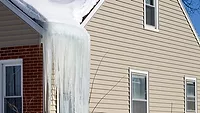Top Emergency Preparedness Tips to Mitigate Weather Damage to Your Home or Business

Photo courtesy of Rainbow Restoration
When any type of weather disaster strikes, the amount of damage to a home or business depends on how prepared you were. Taking the right steps in advance can significantly improve both the safety of occupants and the protection of property. As a seasoned restoration expert, I’ve seen firsthand how a few proactive measures can save thousands of dollars in repairs and countless hours of stress recovering from storms.
Here are some of the most effective emergency preparedness tips that can help mitigate damage to your property and keep you and your loved ones safe.
1. Understanding Risks to Create an Emergency Plan
First things first – understand the risks your property and its location face. Is your home located near bodies of water? Is it in a wildfire-prone area? Homes and businesses settled in coastal areas are more susceptible to disasters like hurricanes, wildfires and high winds. Those in the Midwest or East have to look out for flash flooding, tornadoes and winter storms.
By evaluating your location’s specific weather disaster risks, you can then tailor your emergency preparedness plan accordingly. Whether it’s your home or your business, having emergency plan is crucial for ensuring everyone – family, friends and employees – knows what to do if an unexpected disaster strikes! Take these steps:
- Identify evacuation routes: Share these details with family members, employees, and neighbors, so everyone is on the same page.
-
Run drills regularly:
- For families, make sure that everyone knows their role in an emergency. Designate each member with a responsibility, such as who should grab the emergency kit, who handles making sure pets are safe, etc.
- For businesses, run routine drills with employees to ensure everyone is comfortable with the safety procedures… and to avoid any sort of panic experience like the fire drill situation in The Office.

Photo courtesy of Rainbow Restoration
2. Prepare an Emergency Kit
No matter the weather situation, every household should have an emergency kit prepared. An emergency kit contains essential supplies like food, water, blankets, etc. in case you’re cut off from resources. Here’s what you need in your kit:
- The basics: Make sure to keep in stock bottled water, at least three-days’ worth of non-perishable food, a first-aid kit, flashlights, batteries, blankets, cash money and portable chargers.
- Personal items: Don’t forget to add in personal hygiene items and any important medications to your kit. It’s also a good thought to write down important phone numbers, such as emergency contacts, on a notepad in case your cell phone becomes damaged and unable to use. Store this in a folder that also contains copies of essential documents, including identification, insurance policies, medical records, etc.
- Don’t forget gear: Pack protective gear like masks and work gloves that can be invaluable during major storm cleanup and navigating areas of damages.

Photo courtesy of Rainbow Restoration
3. Prepare Your Property Ahead of Any Weather Emergency
Now that you are aware of the type of weather your property is at risk for and have emergency plan and kit ready, focus on securing your property from major damage. Let’s walk through each type of major weather situation and what you need to do to protect your home or business from costly damages:
- Severe flooding: Flood water is fast moving and can cause extensive damage in a blink of an eye. If you live in a flood-prone area, consider waterproofing windows, doors, and other vulnerable points to keep moisture out. Inspect windows and doors for any cracks where water can seep in and seal them with caulk. Ahead of a major storm, use temporary flood barriers like sandbags for added protection. A sump pump can be your best line of defense against water damage, especially in basements or lower levels. Check it every few months and keep a backup battery ready in case of an outage.
- Hurricanes: This storm brings powerful winds, heavy rain and the potential for prolonged power outages. Protect your property by reinforcing windows and doors with hurricane shutters, stormproof glass or board them up with plywood. Consider having a backup generator which can help maintain power for essential systems, such as refrigerators to keep food from spoiling or TV to maintain latest weather updates, if an outage occurs. Finally, secure all outdoor furniture or items to prevent them from becoming hazards in high winds and causing damages to your or your neighbor’s properties.
- Tornadoes: Tornadoes can arrive with little warning, making it crucial to have safe interior areas for shelter and secure heavy items throughout your property. Designate a safe room in an interior space on a lower level where people can take refuge. Prepare a plan to bring in any outdoor furniture inside quickly to prevent it from becoming a flying hazard. Regularly maintain your yard by trimming trees and branches to minimize the potential for flying debris or a tree falling on top of your roof.
- Wildfires: If you live in a wildfire zone, create a defensible space that will reduce fuel sources around your property. This means trimming at or clearing at least 30 feet of vegetation from around your home or business. Remove small trees like scrub oak and ground fuel like pine needles that can act as fuel sources. Cut branches hanging over the roof to prevent embers from igniting your home. Consider fire-resistant materials for your roof and siding, particularly in fire-prone areas. Clear at least 30 feet of vegetation and brush around your home or business. Regularly test smoke detectors and keep fire extinguishers accessible to help contain small fires or respond to smoke immediately!

Photo courtesy of Rainbow Restoration
Final Thoughts
Preparation is your first line of defense against the unexpected. By planning for the weather that you commonly experience in your area and implementing these emergency preparedness tips, you’re investing in the safety of your home or business. Disaster may strike at any time, but a proactive approach minimizes damage, reduces recovery time and cost… and lastly, protects what matters most! Remember this: the best time to prepare is NOW.
Looking for a reprint of this article?
From high-res PDFs to custom plaques, order your copy today!









